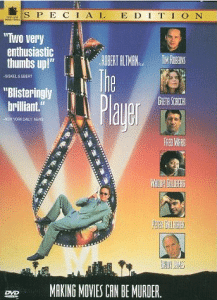 The Super-Angel or VC you’ve been hoping to meet is approaching your booth at TechCrunch Disrupt’s Startup Alley. You have 5-7 seconds to get his attention. What do you say?
The Super-Angel or VC you’ve been hoping to meet is approaching your booth at TechCrunch Disrupt’s Startup Alley. You have 5-7 seconds to get his attention. What do you say?
This is not the time to trot out the classic Unique Value Proposition (UVP). If you’re not familiar with how to write a UVP, stop right now and go read Positioning: The Battle for your Mind by Al Ries and Jack Trout.
True, you need a unique value proposition and writing one can be a first step to generating an attention grabbing statment. There are many formats for writing a UVP, but I’m partial to the XYZ Cab format:
X is a Y for Z. Unlike C, it is A,A and A so you can B
X is your product or service
Y is the product category (the name that buyers use, not some name you made up)
Z is the target customer
C is your primary competitor
A are up to three attributes of your product or service
B are up to three benefits to the buyer, at least one of which has a strong emotional component
For example: Salesforce.com is a Cloud CRM system for Enterprises. Unlike Oracle CRM On Demand, it is easy to use, inexpensive and the #1 choice for CRM developer add-ons, so you can close more deals faster.
OK, now that you’ve written your unique value proposition, you’re ready to come up with that mind blowing statement for the VC or anyone whose attention you need to get in 5-7 seconds. I’ve discovered only two tried and true formats for generating the mind blowing statement.
The High Concept Pitch
A high concept pitch describes a startup’s vision in a single sentence. The concept of the high concept pitch comes from the movie industry. It was popularized in Robert Altman’s The Player, where aspiring screen writers pitched their movie as “Out of Africa meets Pretty Woman“. Babak Nivi of Venture Hacks introduced the high concept pitch to startups in this article. The high concept pitch takes a known (and successful) startup and gives it a twist.
Twitter for the Enterprise (Yammer)
Netflix for books (Bookswim)
Facebook for business (LinkedIn)
Flipboard for the Enterprise (Moprise Coaxion, a product that I worked on)
Not all statements of this format will be successful. To be successful, the high concept pitch must have the following characteristics:
- It must be original – I’ve served as a judge for a number of startup pitch contests, and in early 2011, it seemed like almost every other pitch was a variant of Groupon: We’re Groupon for middle-class white brats, we’re Groupon for lesbian fire fighters, we’re Groupon for Polish dog walkers. You have to be more original than a who-cares twist on the newest startup success.
- The potential should be obvious – in order to get someone’s attention, it must be obvious that your vision fulfills a need for many people. If there isn’t a large audience for your product or service, why would a VC care? For example, as I write this, Pinterest is the hot new startup. It seems likely that someone might pitch “Pinterest for Business” or “Pinterest for the Enterprise”. But at least for me, it’s not clear why lots of people in large companies would need Pinterest.
- It must be memorable and repeatable – the whole point of the high concept pitch, in addition to getting someone’s attention, is to make it easy for the VC to pitch your idea to his partners. So the pitch must be easy to remember and easy to repeat to others. This is one of the reasons you must use a well-known startup in your analogy, not an unknown one. Saying “our startup is like Ban.jo meets Antengo” may mean something to you, but it probably doesn’t mean anything to most investors.
The “Doesn’t It Suck” Pitch
The second, and somewhat harder, format for the mind-blowing, attention-grabbing statement is the “Have you ever tried to do X? Doesn’t it suck?” pitch. You describe a current way of doing things, generally involving an established company, and get agreement that “it sucks” or “don’t you hate it”. For example:
Have you ever forgotten to return a video rental? Don’t you hate late fees? (Netflix)
Have you tried to keep your files synced between all your different devices? Doesn’t it suck? (Dropbox)
Don’t you hate programming your VCR? Don’t you hate commercials? (Tivo)
Have you ever tried to search Craig’s list for exactly what you want? Doesn’t it suck? (someone please do this startup)
The “Doesn’t it suck” pitch can be harder because although VCs like to think they’re typical consumers, they’re not. So they may not identify with a problem that is actually a big problem. Some of them can see beyond themselves, some can’t. Like the high concept pitch, the “Doesn’t it suck” pitch should have obvious potential and should be memorable and repeatable. By definition, it’s probably not original, although your solution may be.
So there you have it: blow their mind every single time with a high concept pitch or a “Doesn’t it suck” pitch. What’s your pitch? I’d love to hear how you’re grabbing people’s attention.

